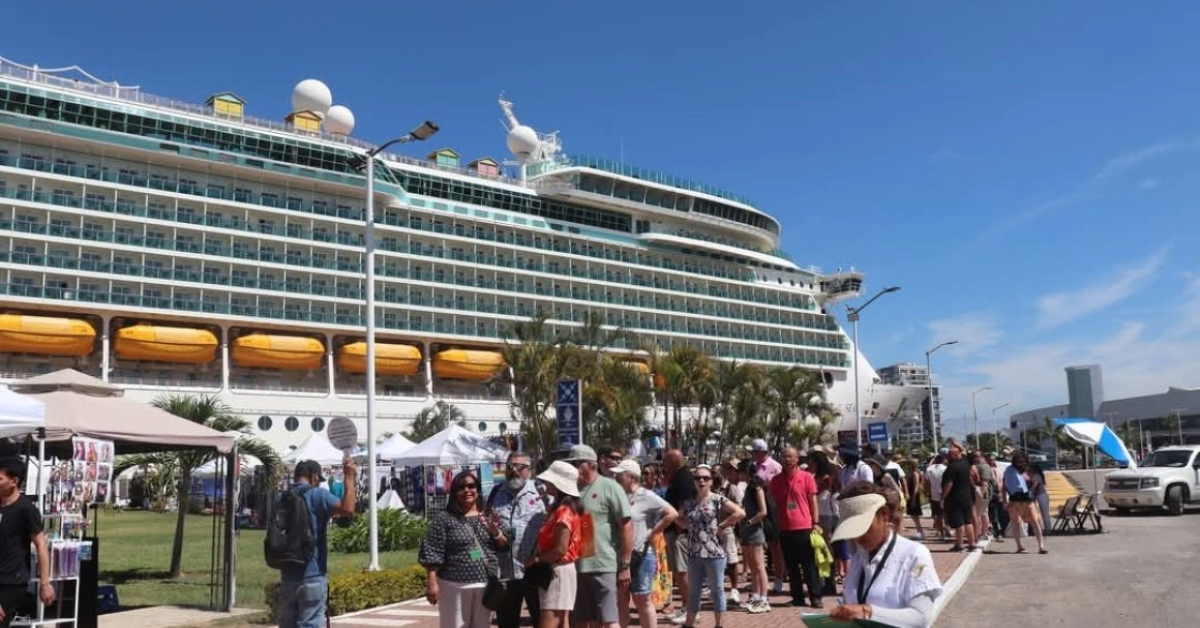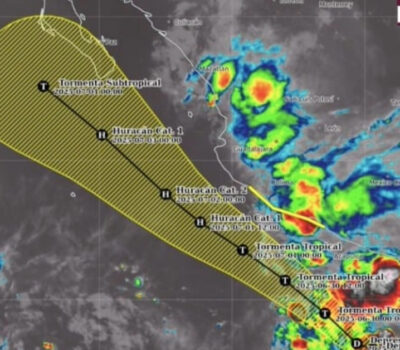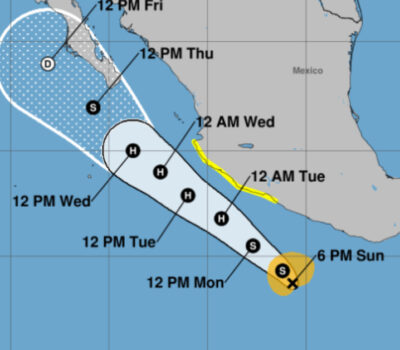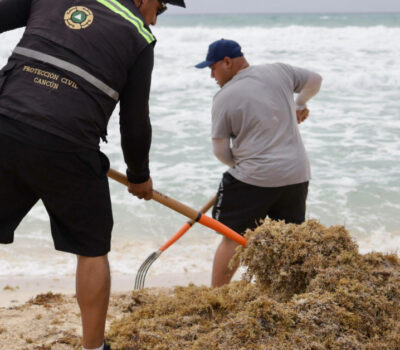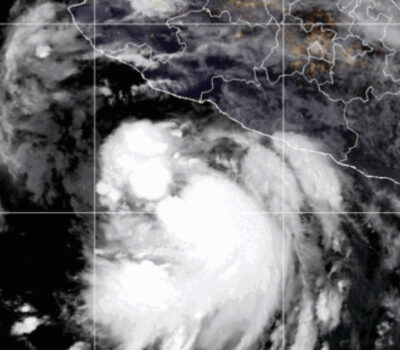Puerto Vallarta, Mexico – Whether you live full-time on the bay, report the city’s pulse from afar, or are planning your next beach escape, today’s roundup distills the six headlines shaping Vallarta right now: a troubling spike in business and home robberies, a tourism-fueled real-estate surge squeezing locals, fresh mobility projects that promise shorter commutes, an international nod from Condé Nast Traveler, record-breaking cruise arrivals pouring millions into the economy, and a planned water shut-off every hotelier in the North Zone needs on their radar. Read on for concise, 300-word deep dives that give you the context, figures, and voices behind each story—everything you need to stay ahead of the conversation in Puerto Vallarta today.
1 — Robberies surge after a quiet 2024
Puerto Vallarta closed the first quarter of 2025 with its worst property-crime tally in more than two years. State data published on the Semáforo Delictivo platform show 20 business robberies and 16 home break-ins in March alone, pushing the municipality into the red-alert zone reserved for statistically significant spikes. Local chambers of commerce say many hits follow the same pattern: two‐person teams on a motorcycle scouting lightly guarded storefronts in Versalles, El Pitillal and the North Hotel Zone before striking at closing time. Police chief Luis Alberto Michel acknowledged staffing gaps created in high season when officers are seconded to traffic control, but he insists patrols will be reinforced ahead of the summer rush.
Criminologist Ana Lucía Gómez attributes the jump to “fast-return crimes”—phones, laptops, small safes—that can be fenced the same night. She warns that if detectives don’t quickly dismantle fencing networks, the red trend line will linger into May. Meanwhile, the city’s insurance brokers report a 38 % increase in business-interruption claims compared with the same period last year. Owners of mom-and-pop tiendas are calling for an emergency fund to install camera clusters on secondary streets, arguing that the municipal C5 command center’s cameras are concentrated downtown. Council-member Rodrigo Zamora has tabled an ordinance that would give shopkeepers a 50 % rebate on the purchase of certified security doors and alarm systems; the vote is scheduled for May 8.
2 — Tourism wave sends property prices into double-digits
Puerto Vallarta’s post-pandemic visitor boom isn’t just filling hotels—it’s pushing condo and home prices up by 11-to-15 % year-on-year, the steepest rise among Mexico’s resort cities, according to a Propiedades.com analysis summarized by Vallarta Daily on April 28. Agents say demand is bifurcated: digital nomads snapping up one-bedroom units in Versalles and Díaz Ordaz, and U.S./Canadian snowbirds bidding on beachfront two-bedrooms in Marina Vallarta and Conchas Chinas.
Inventory has not kept pace. A market brief by TheLatInvestor notes a 105 % jump in active listings for one- and two-bedroom condos between 2023 and 2024, yet absorption rates remain strong, suggesting buyers are simply window-shopping longer before closing. Gated community homes appreciated 10 % last year, while ocean-view units in 5 de Diciembre are projected to climb another 15 % annually as the neighborhood undergoes urban regeneration. Local developers warn that labor and cement costs—already up 18 %—could add a premium to pre-sale contracts signed this summer. City Hall, for its part, is dusting off a dormant inclusionary-zoning proposal that would require new towers to earmark 10 % of units for local residents at below-market rates.
3 — New road, new buses: mobility push accelerates
Francisco Murguía Street, a two-lane connector behind The Home Depot, opened Friday after a MX$18-million makeover that includes LED lighting, landscaped medians and upgraded drainage. Governor Pablo Lemus praised Mayor Luis Munguía for “tangible projects that let ordinary Vallartenses spend less time in traffic and more with family.” The road is expected to benefit 56,800 residents and cargo haulers who previously crawled along parallel neighborhood streets.
While cutting the ribbon, the pair inspected the Las Juntas Interchange, a multi-level bridge that will knit Puerto Vallarta to Bahía de Banderas. Municipal engineers say columns will be poured before the rainy season, with full opening targeted for December. The transport authority also confirmed the arrival of 67 air-conditioned, Euro-VI buses within five weeks, the first step in a long-promised fleet renewal for Route 200 and the Francisco Medina Ascencio corridor. Accessibility advocates are applauding the low-floor design but caution that sidewalk realignment is needed to make the system universally friendly. Future phases include a pier at Mismaloya and feasibility studies for a Uruguay-Street pier that would disperse cruise tenders, easing congestion at the main terminal.
4 — Condé Nast Traveler puts PV on five short-lists
Condé Nast Traveler released its 2025 Readers’ Choice ballots and Puerto Vallarta snagged nominations in the City, Beaches and Airport categories, plus nods for a dozen hotels and 15 resorts. Stand-outs include Hotel Mousai, Hacienda San Ángel and Casa Velas on the hotel list, and Garza Blanca, Marriott PV Resort & Spa and Live Aqua in the resort bracket. Tourism director Luis Villaseñor said the nominations “validate years of destination marketing and, more importantly, the friendliness of Vallartenses who make guests feel at home.”
Voting runs through June 30; results land in the magazine’s November issue. Local hoteliers are rolling out QR codes at check-in and on beach umbrellas urging guests to vote, hoping for a sweep that could bump low-season occupancy by 3-to-5 points. The tourism board estimates each percentage-point uptick delivers MX$80 million in incremental spending, mostly in food-and-beverage and tours. Industry watchers note that Condé Nast accolades often precede airfare increases, so residents campaigning against overtourism will be watching airline capacity announcements closely.
5 — Two “triple-ship” days pump US $2.1 million into the economy
Puerto Vallarta’s cruise pier hosted six ships in just 48 hours (April 23–24)—the Disney Wonder, Norwegian Bliss, Carnival Panorama, Royal Princess, MSC Seascape and Celebrity Eclipse—delivering 17,500 passengers and an estimated US $2.1 million in direct spending. The port authority says average shore-day outlays hover around US $120 per passenger, split between tours (35 %), dining (28 %), retail (25 %) and taxis (12 %). Despite concerns about crowding on the Malecón, city officials hailed the back-to-back “triple-ship” logs as proof that berth-extension works completed last fall are paying off.
Tour operators report dolphin-watching excursions sold out within hours, while restaurant owners in the Romantic Zone logged a 22 % sales spike versus the previous week. Environmental NGOs monitored sulfur-oxide readings at the pier and found levels within IMO 2020 limits, though they reiterated calls for shore-power hookups to cut emissions further. With 214 calls booked this calendar year—up from 187 in 2024—Puerto Vallarta is on track to surpass its pre-pandemic cruise record by August.
6 — Eight-hour water shut-off in Northern Hotel Zone
Utility SEAPAL closes a 10-inch valve on its main 24-inch supply line from 10 a.m. to 6 p.m. on Friday, April 25, affecting hotels, restaurants and roughly 4,800 residents between Plaza Galerías and the Marina roundabout. The repair follows a series of small leaks traced to corrosion around the original 1999 fitting. SEAPAL’s operations chief Claudia Gutiérrez said crews will use an epoxy-lined replacement designed to last “at least 25 years.”
Businesses were advised to fill rooftop tinacos and postpone high-consumption tasks; major hotels triggered contingency plans that include importing tanker trucks for laundry facilities. SEAPAL warned that once service resumes, taps may run brown for several hours while sediment clears—letting water run for two minutes should flush lines. The agency added that supply in downtown and the South Shore was maintained by rerouting flow through the Ixtapa branch line, so tourists elsewhere in the city are unlikely to notice. The valve job is part of a MX$62-million budget to replace 12 critical components before hurricane season, when pipe failures are historically more common.
Puerto Vallarta, Mexico - Whether you live full-time on the bay, report the city’s pulse from afar, or are planning your next beach escape, today’s roundup distills the six headlines shaping Vallarta right now: a troubling spike in business and home robberies, a tourism-fueled real-estate surge squeezing locals, fresh mobility projects that promise shorter commutes, an international nod from Condé Nast Traveler, record-breaking cruise arrivals pouring millions into the economy, and a planned water shut-off every hotelier in the North Zone needs on their radar. Read on for concise, 300-word deep dives that give you the context, figures, and voices behind each story—everything you need to stay ahead of the conversation in Puerto Vallarta today.

